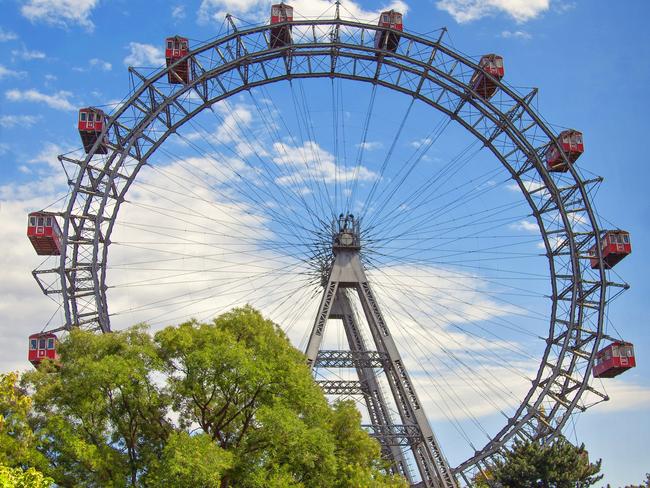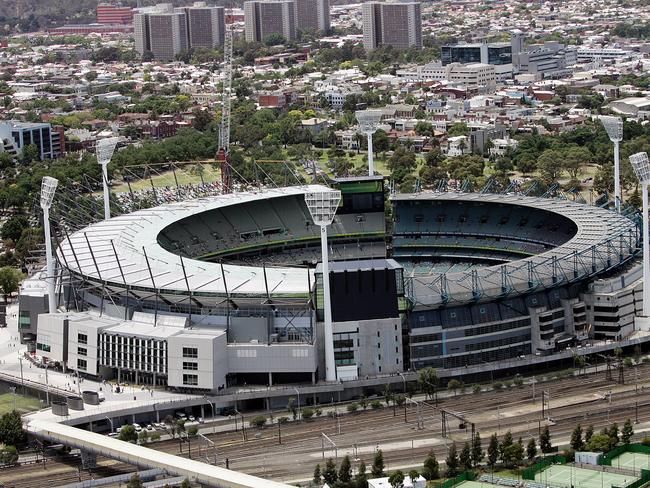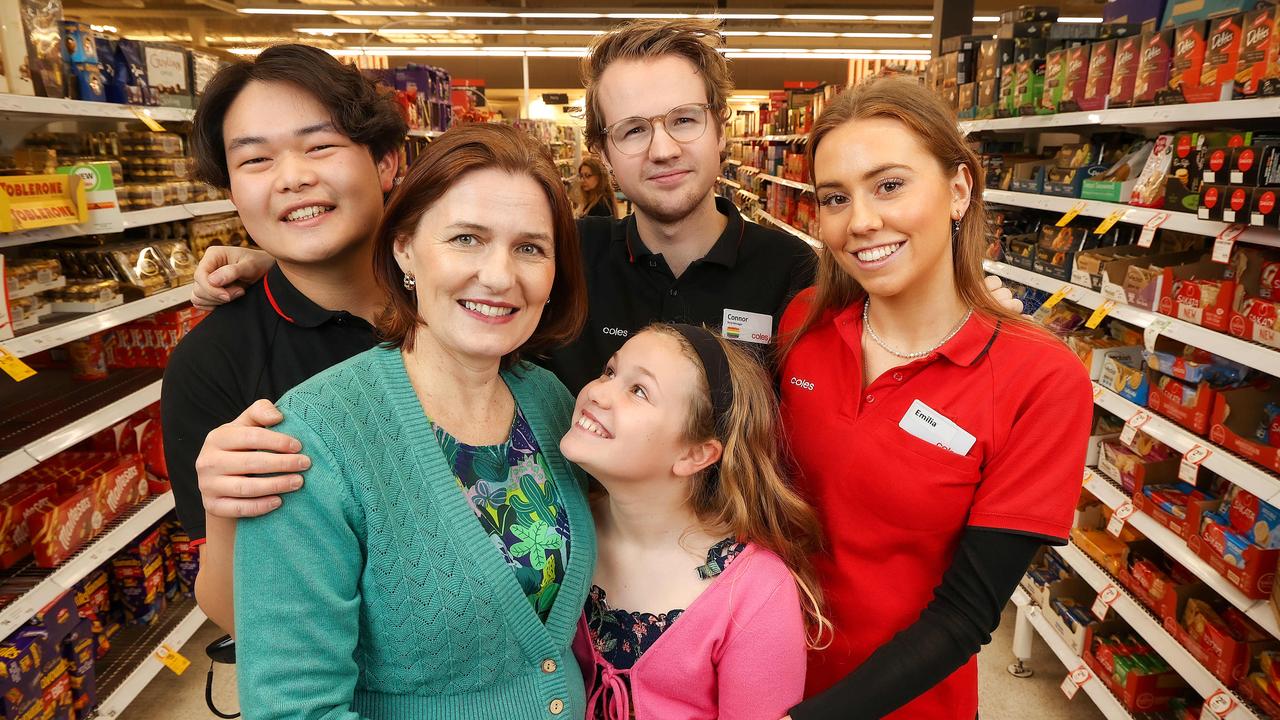Melbourne loses world’s most liveable city status after seven years at the top
MELBOURNE is no longer the world’s most liveable city after seven years at the top — and the European capital that has beaten us may surprise you. But does it really offer more than our city’s excellent coffee culture, world-class sporting events and stunning beaches?
VIC News
Don't miss out on the headlines from VIC News. Followed categories will be added to My News.
MELBOURNE has lost its prized mantle as world’s most liveable city, after seven years at the top.
Instead the Austrian capital of Vienna has taken the top prize which was announced today after the latest global liveability report was released.
MOZART SCHMOZART: WHAT’S SO SPECIAL ABOUT VIENNA?
MELBOURNE ‘MOST LIVEABLE’ CITY SEVEN YEARS IN A ROW
LORD MAYOR REVEALS HER BEST/WORST OF MELBOURNE
But while it isn’t number one, the city has only fallen to second place.
The Economist Intelligence Unit report said while Melbourne had again performed very well, Vienna pipped it at the post by performing even better.

“Although both Melbourne and Vienna have registered improvements in liveability over the last six months, increases in Vienna’s ratings, particularly in the stability category, have been enough for the city to overtake Melbourne,” the report said.
“The two cities are now separated by 0.7 of a percentage point, with Vienna scoring a near-ideal 99.1 out of 100 and Melbourne scoring 98.4. Two other Australian cities feature in the top-ranked places: Sydney (5th) and Adelaide (10th), while only one other European city made the top ten.”
The report said that the Japanese city of Osaka had closed the gap on the top-ranked cities in recent years and was now just behind Melbourne in third place.
“It is now separated from the former top-ranked city by a mere 0.7 of a percentage point,” the report said.
“Osaka’s improvements in scores for quality and availability of public transportation, as well as a consistent decline in crime rates, have contributed to higher ratings in the infrastructure and stability categories respectively.”
REPORT: MELBOURNE’S PRIZED LIVEABILITY AT RISK

Last year, Melbourne topped the annual liveability survey with a rating of 97.5 out of 100, just 0.1 point ahead of the Austrian capital Vienna and 0.2 points higher than Vancouver in Canada.
Adelaide was ranked fifth and Perth seventh. Sydney dropped out of the top 10 last year amid growing fears of terrorist attacks.
The liveability index is based on a city’s performance across categories of stability, healthcare, culture and environment, education, and infrastructure.
Lord Mayor Sally Capp said Melbourne was a very competitive city and wanted to improve its performance next time.
“I know that we’re all going to be working hard to make our way back to number one in the future,” she said.
“Safety and stability are certainly an area for improvement. And we’ve still got some more we can do around culture and environment.”
Ms Capp and the state government ruled out gang crime being a factor in Melbourne’s fall from the top.
“I don’t think it’s fed into this liveability index outcome because our score on stability was exactly the same as last year — a very high 95 out of 100,” she said.
The Lord Mayor said that petty crime had declined in the City of Melbourne in recent years.
Ms Capp said that while she would no longer be able to boast that the city was world’s most liveable, she would be very competitive in spruiking its advantages.
She said that despite coming second, Melbourne had actually achieved its best score in eight years and got 100 for healthcare, education and infrastructure.
“I think we can say that much like winning four premierships in a row, having been world’s most liveable city for seven years will be a record really difficult to break,” she said.

State Housing and Creative Industries Minister Martin Foley said Melbourne was still one of the world’s most vibrant cities.
“Melbourne is not just Australia’s most liveable city, it’s this part of the world’s most vibrant, cultural and investment, jobs factory,” he said.
But Opposition planning spokesman David Davis said Melbourne’s second placing shouldn’t be sugar-coated.
“We have real problems with congestion and cost of living, we have real problems with crime,” he said.
Former premier Jeff Kennett said: “You can’t be premiers every year.”
“And second is not a bad place to be when you consider the size and scope of the competition.”
Music guru and two-time King of Moomba Molly Meldrum was sad to hear the news.
“But Melbourne is still the best in my eyes and we’re still the live-music capital of the world,’’ he said.
Melburnian of the Year Susan Alberti was delighted for “beautiful” Vienna.
“Mark my words, without doubt Melbourne will be back on top next year,” Ms Alberti said.
Reigning Moomba monarch Chrissie Swan described the result as an “outrage”.
Committee for Melbourne chief executive Martine Letts said that while the high ranking was pleasing, the result was a wake-up call.
“Our drop in the liveability rankings is proof that progressing with ‘business as usual’ will not ensure a bright future for our city … our status as a leading international city is being threatened,” she said.

Urban Development Institute of Australia state CEO Danni Addison said Melbourne’s liveability was being compromised because housing and infrastructure was lagging behind rapid population growth.
“This is affecting community sentiment, cost-of-living, congestion and connectivity,” she said.
“Melbourne’s population growth has consistently been undercooked. We’re due to hit 5 million people this year, over 20 years earlier than the ABS predicted two decades ago.
“That type of population growth has to be planned for well in advance if we’re going to minimise growing pains and maintain the city’s liveability.”
Property Council of Victoria acting executive director Matthew Kandelaars said Melbourne’s fall was a call to action, and tough decisions were needed for the city’s long-term future.
“As immediate steps, we must accelerate housing supply and choice across all areas of Melbourne, drive an evidence-led infrastructure pipeline and improve the independence and capability of our planning system,” he said.

Mr Kandelaars said that the Creating Great Australian Cities report released by the Property Council in May found that Melbourne didn’t score well on factors like congestion, digital connectivity and fragmentation of government.
“Today’s result from The Economist confirms this,” he said.
“With an upcoming state election, it’s vital that politicians look ahead and show the courage to make tough, long-term decisions to ensure Victoria’s prosperity and liveability.”
But planning expert and RMIT emeritus professor Michael Buxton dismissed the significance of the Economist survey, which he said was focused on global high-flying visitors who could afford to live in affluent areas with excellent services.
“It’s not really intended to be an accurate measure of how liveable Melbourne is for most of the people who live here,” he said.
“They’re misleading measures, because they distract attention from the increasing problems that Melbourne is facing like congestion and failure of governments to provide enough infrastructure and services.”
The recent Creating Great Australian Cities report ranked Melbourne 20th in a survey of global cities, using 300 benchmarks.
It was criticised for congestion, planning red tape and infrastructure investment lag.
Top cities were London, Singapore, Paris and New York, with Sydney ranked 13th.
TOP 5 MOST LIVEABLE CITIES
1. Vienna, Austria
2. Melbourne, Australia
3. Osaka, Japan
4. Calgary, Canada
5. Sydney, Australia
VIENNA VS MELBOURNE — MAIN ATTRACTIONS
VIENNA
■ Wiener Riesenrad ferris wheel
■ Classical music — Mozart, Beethoven, Schubert and Johann Strauss
■ Apple strudel
■ St Stephen’s Cathedral
■ Schönbrunn Palace

MELBOURNE
■ MCG
■ Cafes
■ Flinders St Station
■ Royal Botanic Gardens
■ Street art



